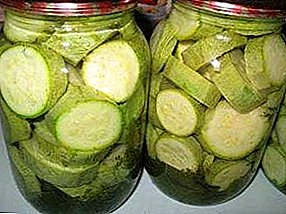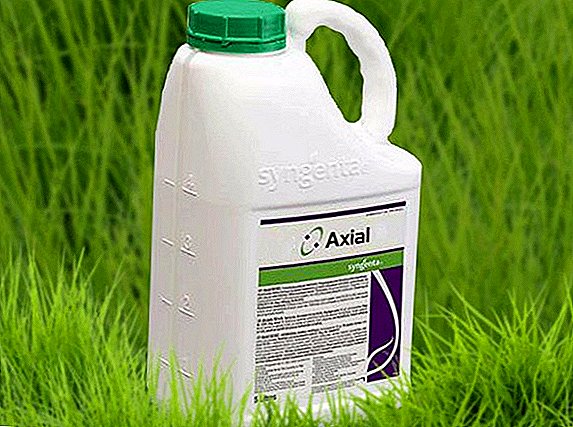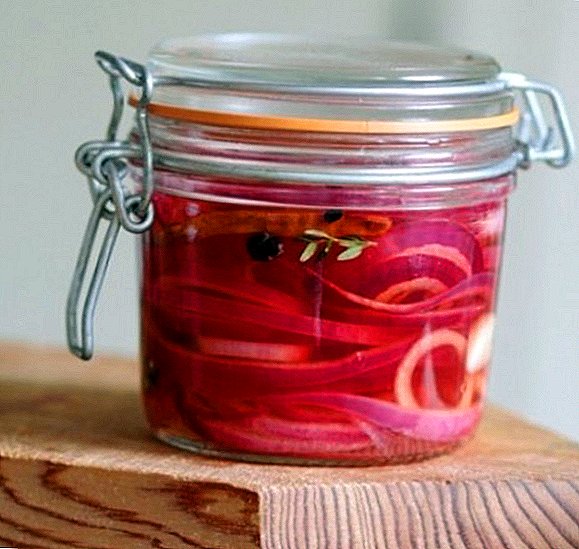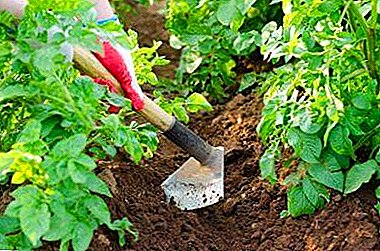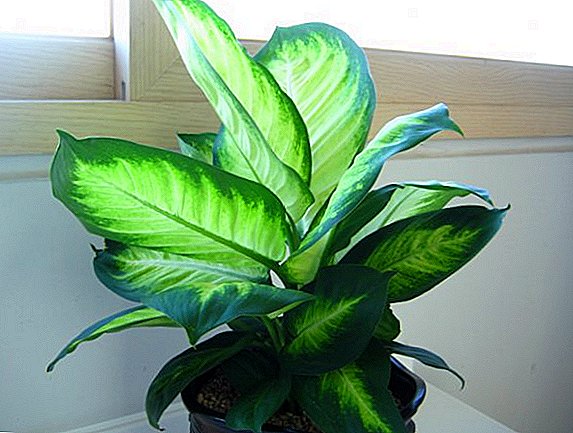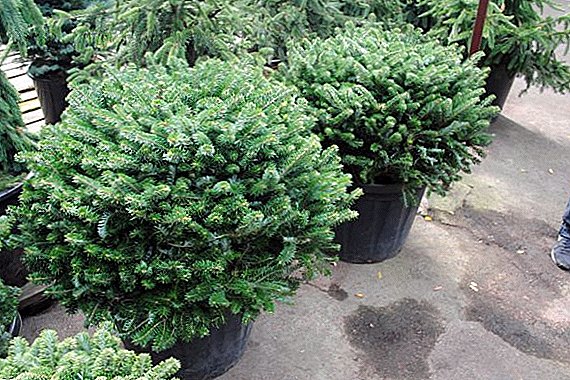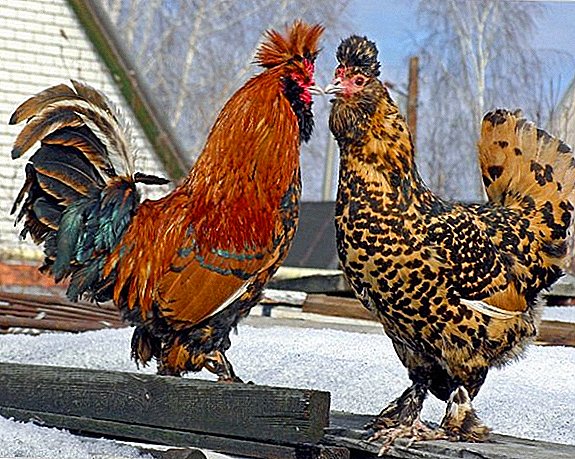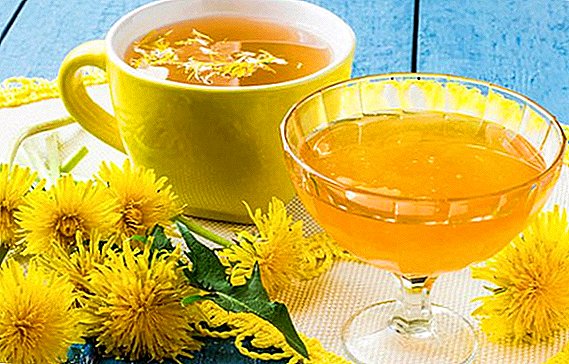 Dandelions are called the genus of perennial herbaceous plants. A typical representative of the genus is the common dandelion. It is found everywhere in our latitudes. The plant has other names: dandelion field, pharmacy, medicinal. About medicinal abilities we will describe further.
Dandelions are called the genus of perennial herbaceous plants. A typical representative of the genus is the common dandelion. It is found everywhere in our latitudes. The plant has other names: dandelion field, pharmacy, medicinal. About medicinal abilities we will describe further.
What is useful dandelion
Milk dandelion juice contains bitter glycosides, resinous substances (wax and rubber). The foliage has choline, tar, saponins, nicotinic acid, flavonoids, glycosides. The same components are contained in the inflorescences.
From the plant’s root system, triterpene compounds can be obtained, P-sitosterol, stigmasterol, inulin (its share varies from season: about 40% in autumn, about 2% in spring, about 24% on average), choline, nicotinic and malic acids, bitter and tannins, sugar, tar, wax, rubber, fatty oil.
Did you know? In the foothills of the Caucasus there is an unusual kind of dandelions, which has purple petals.

In addition to the listed components, the leaves and stem contain (per 100 g):
- potassium - 397 mg;
- calcium - 187 mg;
- sodium, 76 mg;
- phosphorus - 66 mg;
- magnesium - 36 mg;
- iron - 3.1 mg;
- selenium - 0.5 mg;
- zinc - 0.41 mg;
- manganese - 0.34 mg;
- copper - 0.17 mg;
- Vitamin E - 3.44 mg;
- Vitamin PP - 0.806 mg;
- Vitamin K - 0.7784 mg;
- Vitamin A - 0.508 mg;
- Vitamin B2 - 0.260 mg;
- Vitamin B6 - 0.251 mg;
- Vitamin B1 - 0.190 mg;
- Vitamin B9 - 0.027 mg.
Learn more about the beneficial properties of dandelion.

Nutritional value of green raw materials:
- water - 85.6 g;
- proteins - 2.7 g;
- fat - 0.7 g;
- carbohydrates - 9.2 g;
- dietary fiber - 3.5 g
100 grams of boiled or dried plants contain:
- potassium - 232 mg;
- calcium - 140 mg;
- sodium, 44 mg;
- phosphorus - 42 mg;
- magnesium - 24 mg;
- iron 1.8 mg;
- Zinc — 0.28 mg;
- vitamin C - 18 mg;
- Vitamin E - 2.44 mg;
- vitamin K - 0,551 mg;
- Vitamin PP - 0.514 mg;
- Vitamin A - 0.342 mg;
- Vitamin B2 - 0.175 mg;
- Vitamin B6 - 0.160 mg;
- Vitamin B1 - 0.130 mg;
- Vitamin B9 - 0.013 mg.

Nutritional value of 100 g of product:
- water - 89.8 g;
- proteins - 2 g;
- fats - 0.6 g;
- carbohydrates - 6.4;
- dietary fiber - 2.9 g
Such a rich composition allows the plant to be used in both traditional and traditional medicine. Powders, extracts, decoctions are made from leaves and roots. They, along with other medicinal plants are part of the gastric fees and teas to increase appetite.
They are also used as a choleretic, laxative agent and to improve digestion. Dandelion roots are used alone or in combination with other choleretic drugs for cholecystitis, hepatocholecystitis, gastritis, chronic constipation.
Centaury, white carrot, St. John's wort, plectranthos, whitehead, wormwood, sedge, red currant and chamomile also have a choleretic effect.
Dandelion components along with wild chicory are used in the treatment of fatty infiltration of the liver. And dandelion roots together with nettle leaves are used to improve lactation. 
We advise you to familiarize yourself with the beneficial properties of such weeds as the field thistle, amaranth, creeping gorchak, clumpy pueraria, bluegrass, white martus, creeping couch grass, dodder, milkweed, thistle, ambrosia and thistle.
Observed in plants and anti-tuberculosis, antiviral, antifungal, anthelmintic, anti-carcinogenic and antidiabetic abilities.
In folk healing dandelion is used to improve appetite, cleaning the blood, intestines, as a diuretic. Helps with problems with bile, liver, kidneys, bladder. Improves metabolism, is useful for hemorrhoids. It is noted that dandelion juice can be instilled in the eyes when they are inflamed.
Did you know? The company Continental AG for the production of tires together with the Institute of Molecular Biology in the city of Fraunhofer and the University of Westphalia. Wilhelma has developed a technology for producing rubber from dandelions. This technology allows you to get quality tires and save rainforests from cutting.
Dandelion Recipes
The plant is successfully used not only in medicine, but also in cooking. Here are some unusual recipes for our usual dishes. 
Dandelion honey
In order to prepare the product, you need:
- 400 dandelion flowers;
- 0.4-0.5 liters of cold water;
- 1 kg of sugar;
- pan;
- colander;
- gauze;
- sterile jars;
- covers.
Washed inflorescences of a plant are poured with water in a saucepan. The container is set on fire, and its contents are boiled for a couple of hours. Broth needs to be drained into another container. For this colander covered with gauze. All well wring out. Pour sugar into this liquid and return to the fire again. It is necessary to boil all 7-10 minutes.
When the sugar is dissolved, and the contents of the pan will begin to thicken, remove from heat - the product is ready to eat. For easy storage, it can be poured into jars and rolled up. 
Dandelion Jam
Have to take:
- 360-400 dandelion flowers;
- 2 cups cold water;
- 7 glasses of sugar;
- colander;
- gauze;
- pan;
- sterile jars;
- covers.
Check out the recipes for making jam from quince, cassis, hawthorn, Manchurian nut, strawberry, white cherry, gooseberry and wild strawberry.
Wash flowers and fill with water. We put on the fire and boil a couple of minutes. Drain the liquid into another saucepan through a colander with gauze. All is well pressed. In the resulting liquid pour sugar and again put on the fire. Boil for seven minutes. The product is ready. Pour it over the banks and close the lids.
Important! For jam, it is desirable to take flowers collected in May, and away from highways and industrial areas.
Dandelion Leaf Salad
For cooking salad need:
- 300 g of young dandelion foliage;
- 2 slices of stale loaf;
- 2 pcs. bulb onions;
- 2 cloves of garlic;
- 3 tbsp. l herbal vinegar;
- pinch of sugar;
- 1 tsp mustard;
- 4 tbsp. l mustard;
- salt pepper.
Wash the leaves and dry. Cut the dough into cubes and fry in butter until crunching. Crush onion and garlic, and mix with bread. Add sugar, salt, pepper, mustard to vinegar. Stir. Add butter to the mixture and beat until smooth.  The leaves are laid out on a plate, poured on top of the sauce. They put a loaf on them. Salad should be eaten immediately after cooking.
The leaves are laid out on a plate, poured on top of the sauce. They put a loaf on them. Salad should be eaten immediately after cooking.
Dandelion soup
For soup need:
- 400 g dandelion foliage;
- 1 kg of chicken;
- 200 g of cream 20%;
- 200 g potatoes;
- 225 g (3 pcs.) Of onion;
- 4 cloves of garlic;
- 1 egg;
- 1 lemon;
- 10 g fresh mint;
- 6 g sesame;
- 50 g of vegetable oil;
- 3.5 liters of water.
Cooking start with cutting chicken:
- Separate the carcass from the bones and skins. Prepare the broth on the bones. Fill them with 1.5 liters of water and cook for an hour and a half. Meanwhile, peel and cook potatoes. Ready-made tubers, cut into large pieces. One onion mode is large, others are small. Garlic (2 cloves) and mint are also finely chopped. From lemon extract juice. Separate the egg white from the yolk.

- Chicken meat and peel together with chopped large onions and whole garlic twist in a meat grinder. In the stuffing add salt, pepper, mint. Stir thoroughly. Boil two liters of water. Pour the washed leaves into it and bring to the boil again. Skit down.

- In vegetable oil, fry finely chopped onion and garlic. Pour them into the pan, add the leaves and pour half the broth. The mixture is cooked over low heat until the leaves are soft. It is important that they do not change color. Add the potatoes and grind everything with a blender. Now add the cream, the second part of the broth, salt, pepper and bring to a boil. Pour the dish on plates and add chicken balls.

- Balls are made from minced meat. Add protein to it and mix well. Next, pour 2 tbsp. l lemon juice. Minced meatballs are made of minced meat and rolled in sesame. Meatballs are fried in a pan in oil until half cooked. Add lemon juice and fry for another three to five minutes. You can spread the balls in the soup and enjoy the fragrant dish.

Yogurt with dandelion
For this dish requires:
- 2 glasses of yogurt;
- 1 tbsp. l crushed dandelion leaves;
- 2 tbsp. l crushed inflorescences;
- 1 tbsp. l walnuts;
- 1 tbsp. l honey
All components except nuts, mix with a blender. Beat up about three minutes. The resulting homogeneous mass is poured into glasses and decorated with crushed nuts.
Dandelion Wine
For a drink you need:
- liter jar of dandelion inflorescences;
- 2 lemons;
- 1.5 kg of sugar;
- 100 g raisins;
- 3-4 pieces mint branches.
The drink is prepared on the basis of flower petals. They are separated with a knife from the receptacle. We put the finished raw material into the pan and pour four liters of boiled cold water. Cover with a lid and leave for a day. After 24 hours in half a liter of boiling water, dissolve the sugar and set the syrup on the fire.
We recommend you read about how to make wine with black currants, plums, raspberries, apples, grapes, rose petals, as well as compote and jam.
Cook until thick. The consistency is checked in this way: a drop of syrup is dripped onto a flat surface. The finished product will retain the shape of a drop. We put the pot, in which the flowers insisted, set on fire, bring to a boil and let cool.
Filter out. Leaves should not get into the liquid. From the pulp of lemons extract juice. Pour syrup into the infusion, add raisins, mint, lemon zest and juice. All mix and cover with gauze. Leave for two days to wander. After two days, mint and zest remove. Pour the liquid into a bottle and put a medical glove on the neck.  In one finger we make a small hole. We remove the bottle in a dark place - you need to wander the drink. At the end of the fermentation process, the sediment is separated, and the wine is bottled, corked and hid in a cool place away from sunlight. There it will ripen 3-6 months.
In one finger we make a small hole. We remove the bottle in a dark place - you need to wander the drink. At the end of the fermentation process, the sediment is separated, and the wine is bottled, corked and hid in a cool place away from sunlight. There it will ripen 3-6 months.
Dandelion Tea
To prepare the drink you need:
- 2 tsp. dry dandelion foliage;
- 0.3 liters of water.
Pour dry raw material with boiled water and brew for 10 minutes. To taste add sugar. You can drink.
Important! Dandelion tea is a good diuretic, so when it is consumed it is necessary to increase the percentage of foods containing potassium in the diet.

Storage
Dried plant components are stored in a dark, dry, warm, well ventilated room. Roots are best kept in wooden boxes, foliage and flowers - in fabric or paper bags or in cardboard boxes or glass jars.
Roots retain their properties up to five years. The remaining parts of the plant are only suitable for a year.
Contraindications
If you take the plants dosed, then the side effects will not be. If the rate of consumption is exceeded, an allergic reaction will occur, or the acidity of the stomach will increase.
As you can see, dandelion is not only a source of useful elements, but also an excellent raw material for culinary experiments. The main thing when cooking dishes is to use raw materials collected in clean areas. Then the dishes will not only be tasty, but also useful. 







